A year-round destination that serves as a model for future waterfront urban development through the United States and around the world.
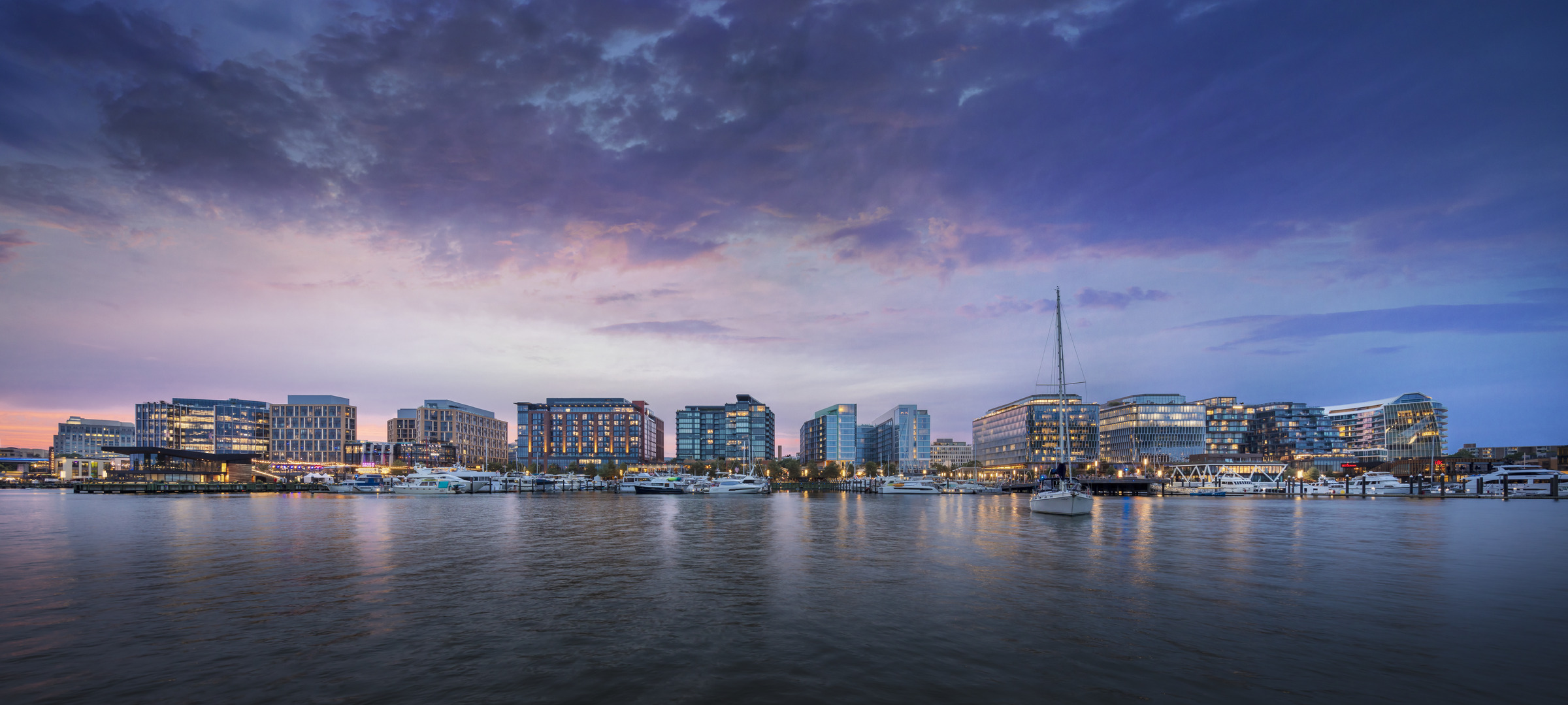
Perkins Eastman led the design and implementation of a visionary urban district known today as The Wharf, completely transforming and revitalizing a historic section of Washington, DC. Beginning with a comprehensive water plan, the team created an integrated, state-of-the art new standard for public realm, architecture and planning that honors site, history, and community. The Wharf is a vibrant neighborhood encompassing a wide range of commercial, residential, and public uses. With expansive new piers, buildings, and promenades shaping dynamic spaces for people to gather, The Wharf is a place for all to enjoy life at the water’s edge.
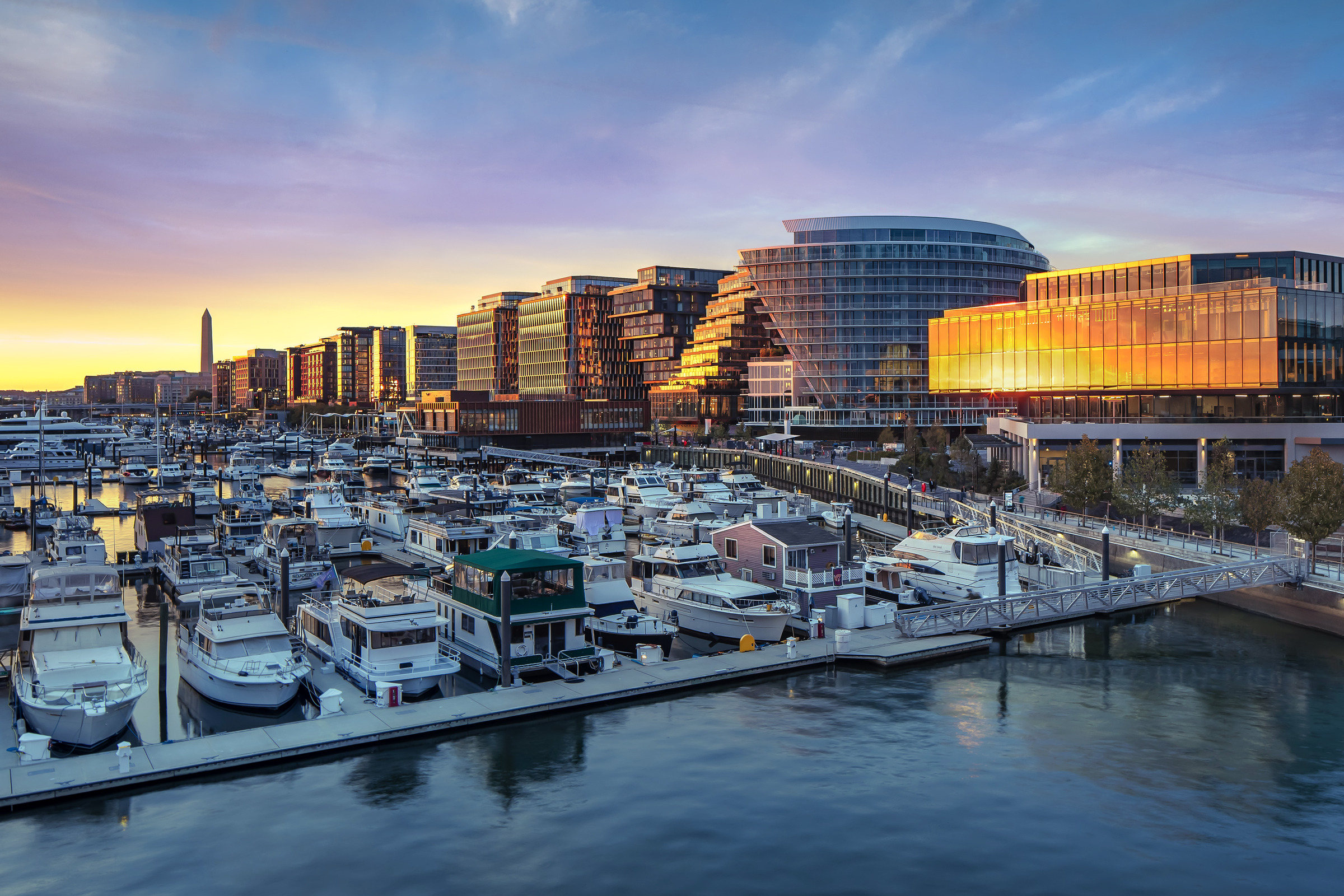
Originally planned as the gateway to the nation’s capital, Washington, D.C.’s Southwest Waterfront was all but forgotten for half a century. The Perkins Eastman team started by designing a robust water plan to reconnect Washington to its waterfront.
Fully integrating land and water functions, a series of new piers and floating docks extend the city’s grid out to the expanded pier bulkhead line along the Washington Channel. District Pier, with the impressive Dockmaster Building at its terminus, stretches more than 400 feet into the Channel and is an ideal, flexible space for public events and concerts. Transit Pier and the Jetty Terminal facilitate water taxi access for travelers throughout the District, Maryland, and Virginia while Market Pier adds additional floating barge space to the historic Municipal Fish Market. Recreational Pier punctuates the center of the mile-long Wharf, with adult-size swing sets, a terraced amphitheater for performances, and a sloping wall popular with skateboarders. And an additional pier on the Wharf’s south end anchors a waterfront park.
The Wharf’s water-first design provides unprecedented waterfront access to the region and influenced the architecture and design throughout the entire development.
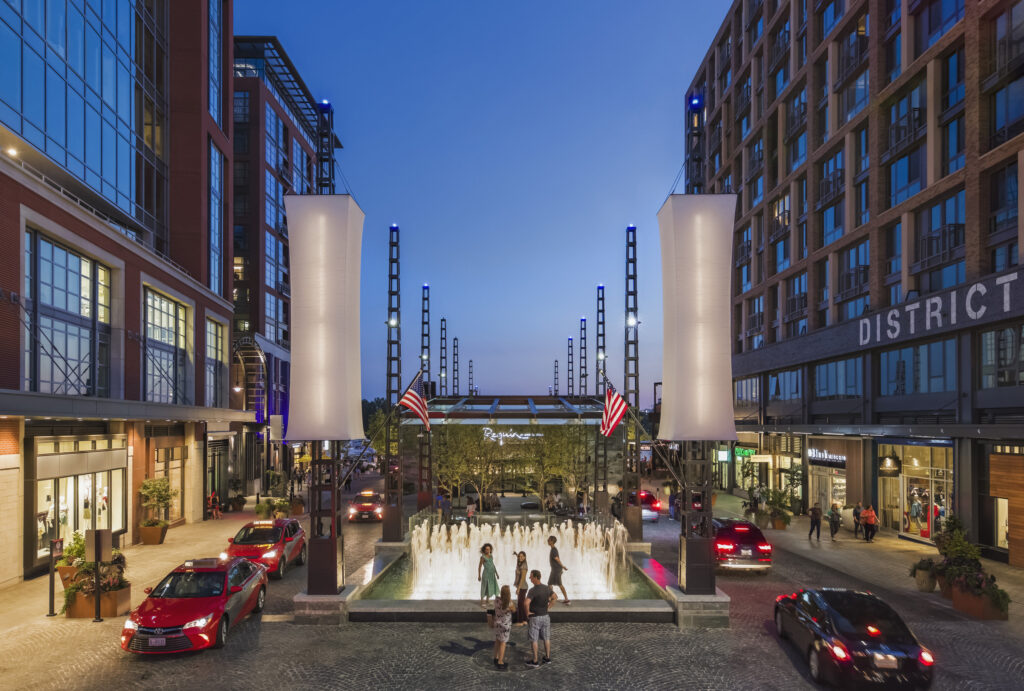
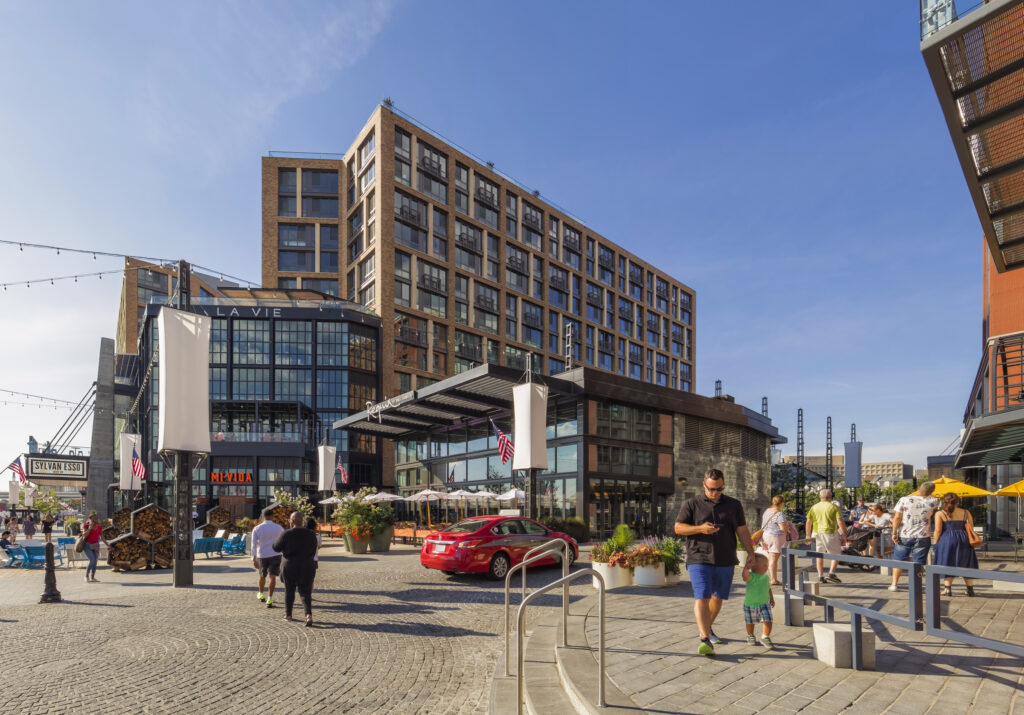
What sets the innovative, market-driven vision of The Wharf apart from others is its captivating pedestrian experience. Placemaking design strategies yield adaptable, human-scaled spaces in between each building in the form of open spaces and alley ways, each with a distinct character.
Wharf Street is a flexible, mile-long shared street between pedestrians and cars, with café zones and promenade space running parallel to the water. The architecture along this key spine including the Pier House and a series of pavilions for retail, dining, and other activities shape a unique experience along the water. Small alleys—also known as mews—are multi-purpose. Not only can they be used for musical performances, quiet escapes, and impromptu gatherings, they also act as service access for larger buildings, provide alternate walking routes, and offer protection from the elements.
Every space at The Wharf is carefully choreographed to ensure diverse experiences and personal moments for all times and occasions.
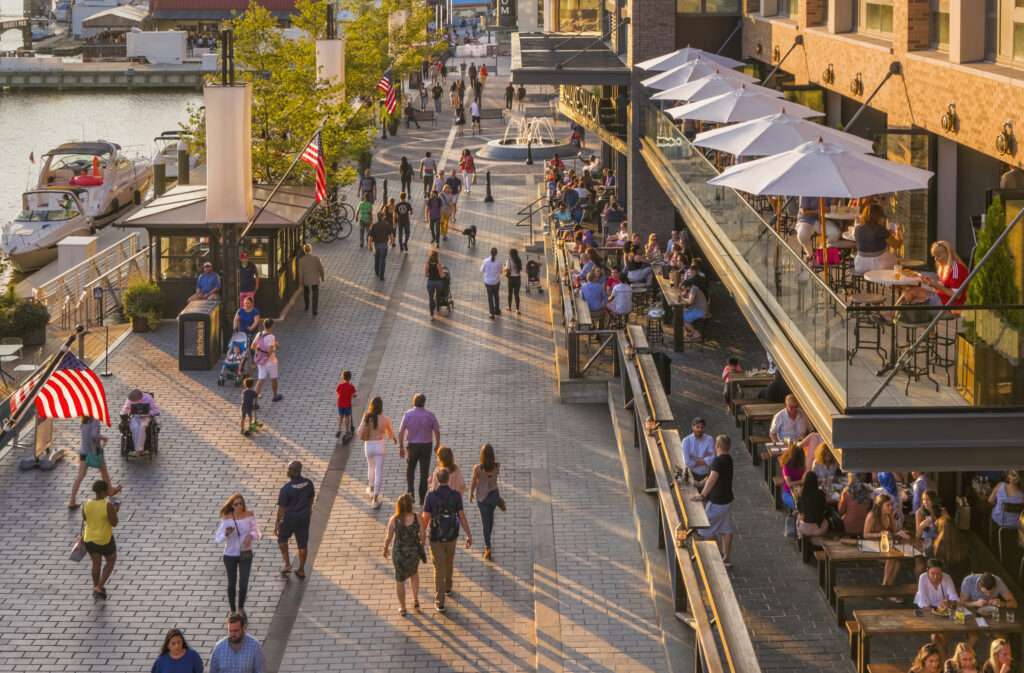
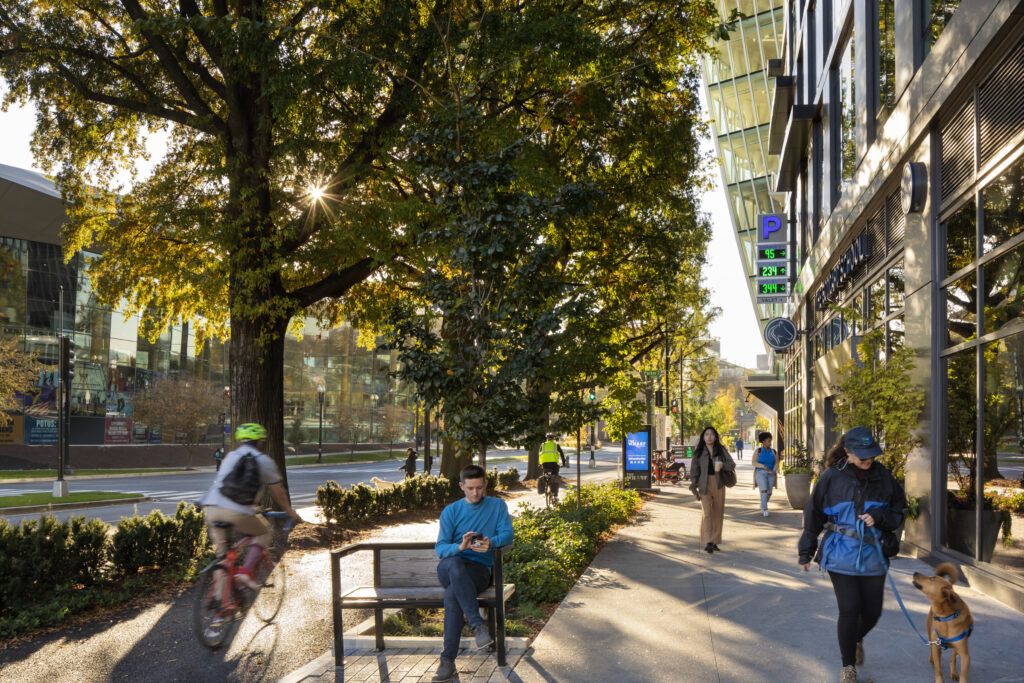
A model public-private partnership, the Southwest Waterfront is the largest planned-unit development in the history of Washington, DC. Spanning 16 years and two construction phases from original concept to completion, Perkins Eastman wrote the regulations and requirements for the public realm that surrounds the new buildings along the mile-long development that stretches from the city’s historic Municipal Fish Market to the north down to the Fort McNair army post on the southern end. In the process, the firm partnered with dozens of design firms, developers, and construction companies as they designed and constructed hotels, apartments and condos, office buildings, and restaurants and retail. Perkins Eastman also served as the architectural designer of several large and complex buildings, including 800 Maine Avenue, a mixed-use office building, and The Channel, a first-of-its-kind apartment building housing over 500 units atop a world-class music venue, The Anthem.
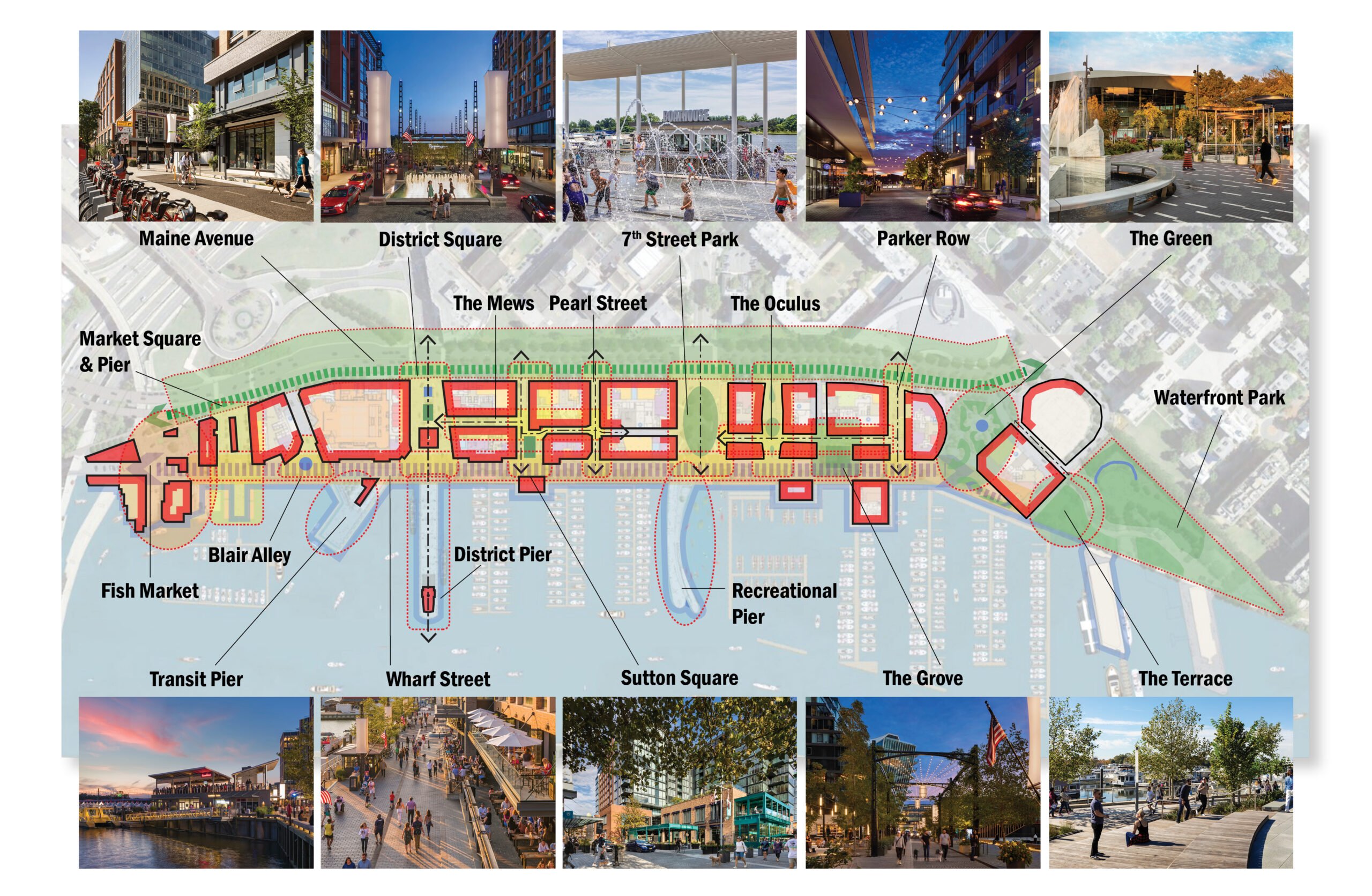
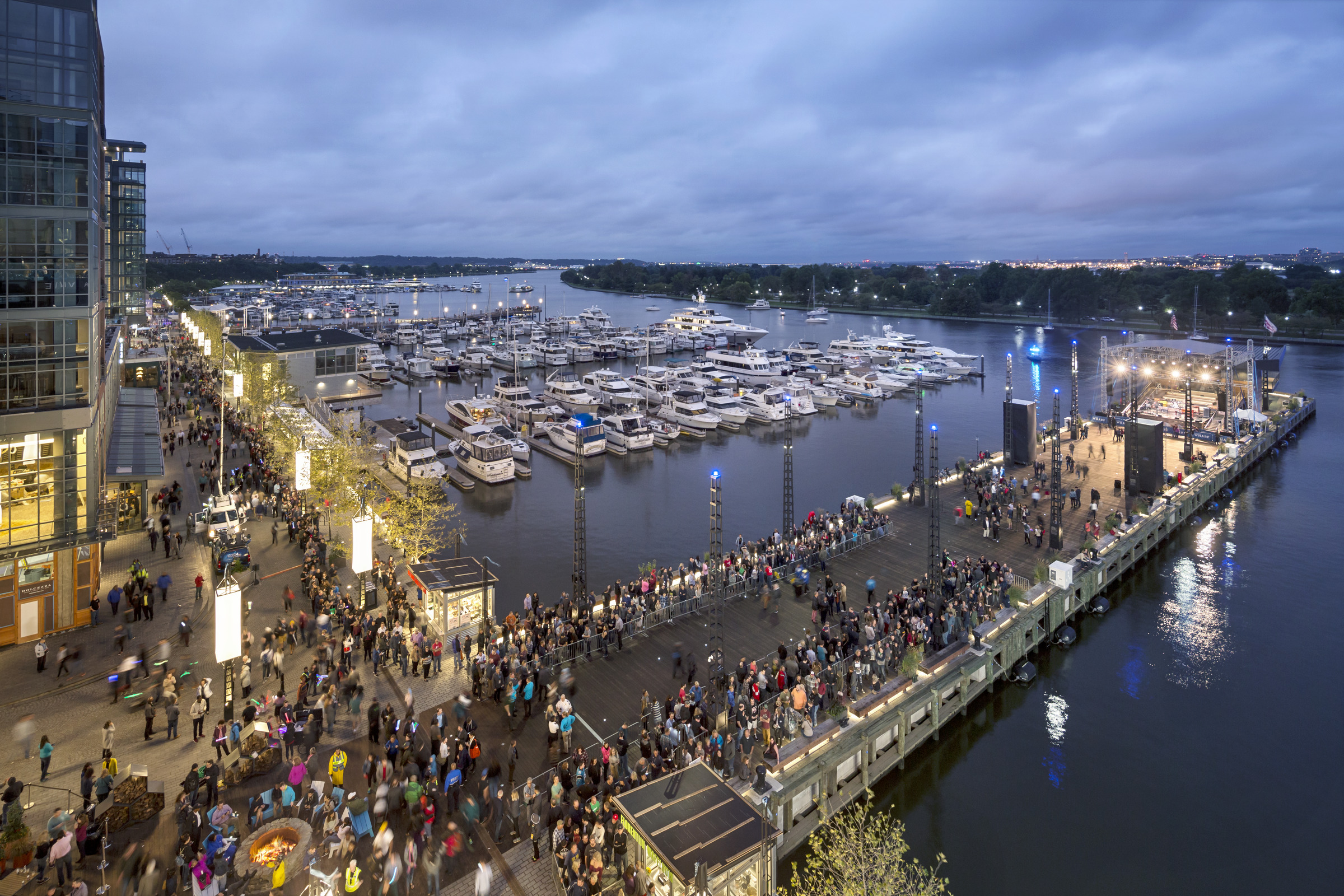
The Wharf’s design is driven by a sensitivity to the community, ecology, and economy of the Southwest Waterfront. Hundreds of community meetings yielded a plan that would be 60% publicly accessible and provide mixed-income housing. The development encompasses extensive transportation planning, making it equally accessible by boaters, water-taxi patrons, pedestrians, bikers, drivers, and public transit riders.
Improving environmental health and maintaining limited impact, sustainability measures are central to the plan. The Wharf is designed to exceed the requirements of the local Anacostia Waterfront Initiative through the innovative use of cisterns, vegetation, and permeable pavement. One hundred percent of storm water is managed onsite, helping divert up to 33 million gallons of untreated runoff from the Channel. Significant energy reductions and other environmental benefits are achieved through use of co-generation systems, green and high-reflectance roofs, and biodiverse plantings.
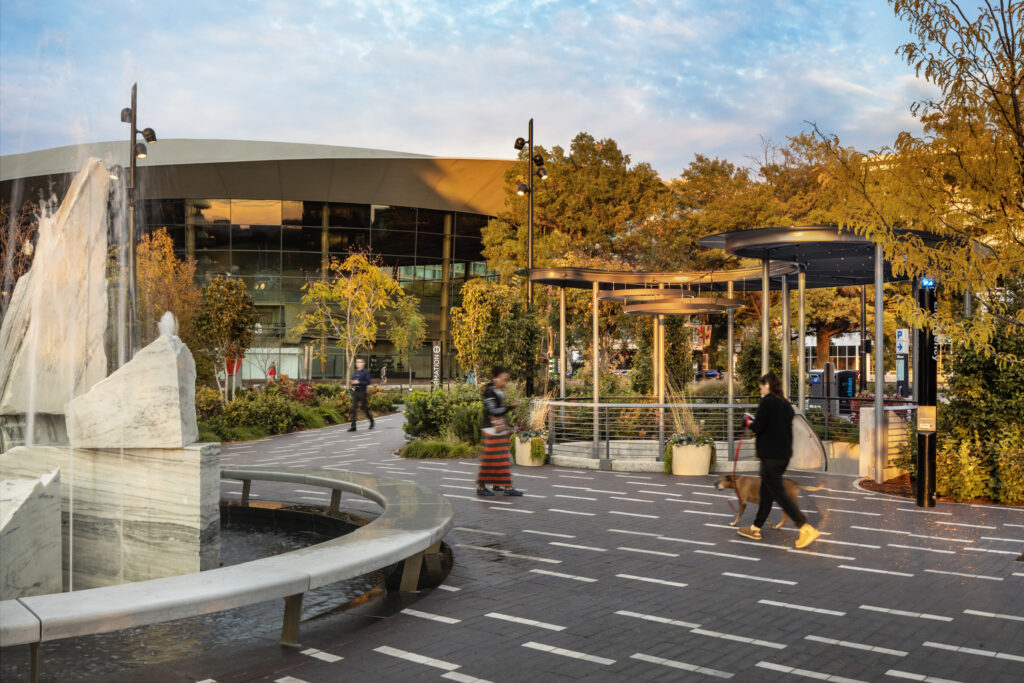
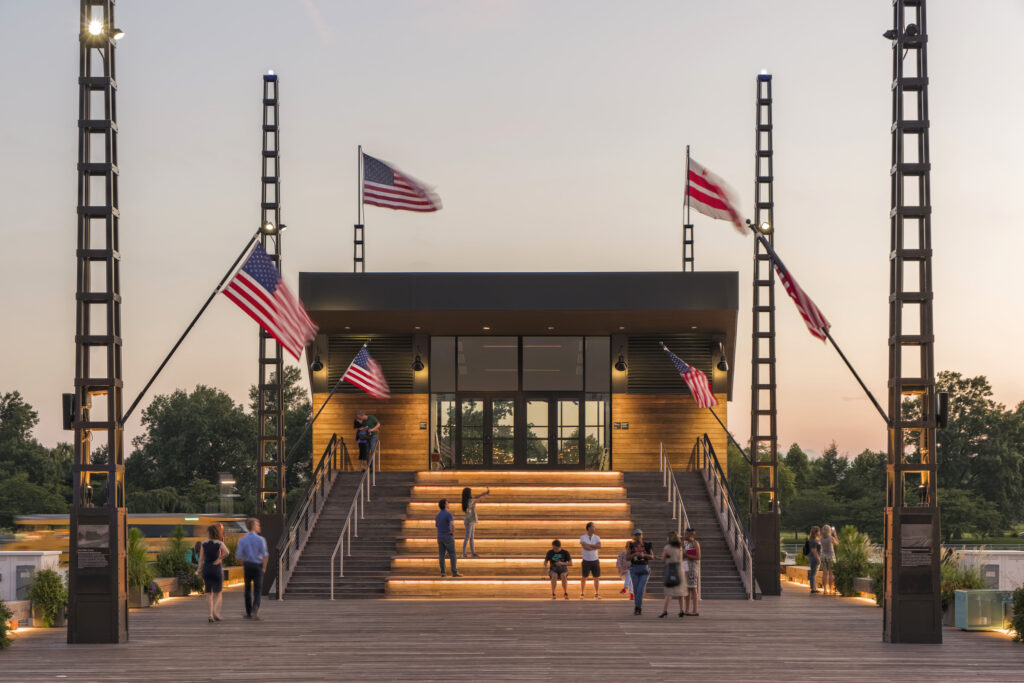
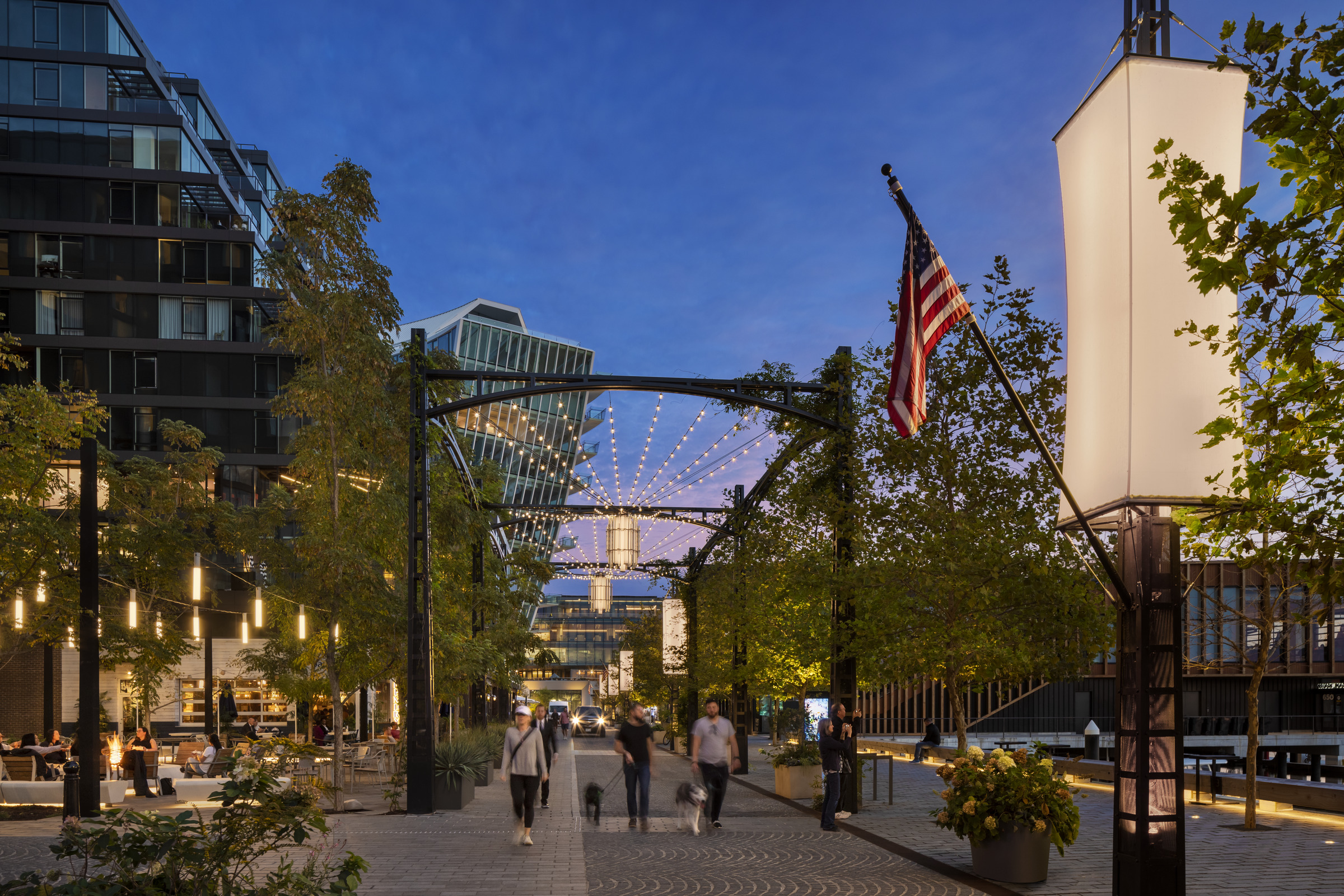
“Working together, the waterfront’s diversity of places yields a lively urban environment. These places are public, pedestrian-oriented, and bound to The Wharf’s connective tissue. Beyond the establishment of the retail and private real estate realms, The Wharf’s places characterize the memory of the city, and add real civic value to a decidedly new destination in Southwest DC.”
– Stanton Eckstut, FAIA, Design Principal
In a video produced by the Pittsburgh History & Landmarks Foundation, Stan Eckstut walks through The Wharf as he discusses his approach to reinvigorating the urban waterfront.
| Client | Hoffman-Madison Waterfront LLC |
| Size | 2 million sf |
| Services | Architecture, Master Planning, Urban Design |
| Sustainability | Link to Wharf Sustainability Report |
News
2023: Included in the sixth edition of the AIA Guide to the Architecture of Washington, DC
Perkins Eastman Narrative Magazine: “The Wharf, at Long Last,” Fall 2022
“Phase 2 of The Wharf Officially Opens,” Hill Rag
“DC’s $3.6B Waterfront Project Wraps Phase 2,” Commercial Property Executive, Oct. 14, 2022
“The Wharf’s Phase Two is Opening with Over 20 New Spots,” Washingtonian Magazine
Insights Post: Why are July 4th Gatherings so Special?
“The Soon-to-Deliver, and 700 Proposed Units, for The Wharf,” DC Urban Turf
“A Few Changes for Residential/Retail Development Proposed at Wharf’s Former USDA HQ,” Urban Turf
Field Condition Blog: Scenes from The Wharf Phase 2
“Urban Center Opens Waterfront of Major City” – Charter for New Urbanism
“The Wharf in DC Makes a Splash” – Urban Land
“Finding the Untapped Potential of Alleys” – City Lab
“It Took 4 Acts of Congress and 22 Architecture Firms to Make The Wharf Happen” – Washingtonian
“The Wharf: Southwest Waterfront” – ARCHITECT Magazine
“The Wharf, D.C.’s Massive Waterfront Development, Is Now Open” – The Architect’s Newspaper
“Phase 1 of The Wharf Underway in DC; Perkins Eastman Leads as Master Planner” – Archinect
“D.C. Breaks Ground on $2B Mega Waterfront Development” – Building Design + Construction
“Urban Planning Lessons from the D.C. Region” – Metropolis
“A Built-From-Scratch Neighborhood in Washington That Doesn’t Feel Prefab” – New York Magazine
Awards
2024 National AIA Regional & Urban Design Award
2023 Best of the Best and Gold awards for New Developments: Mixed-Use Projects, ICSC Centerbuild Design Awards
Redevelopment of the Year in Washington, DC; CoStar Impact Awards 2023
Merit Award, Urban Design, AIA New York (2020)
Grand Prize, Congress for New Urbanism (2020)
Finalist, Urban & Masterplans, Architizer A+ (2020)
Citation, Urban Planning & Design, AIA New York State (2019)
Winner, ULI Global Awards for Excellence (2019)
Merit Award, Urban Design & Master Planning, AIA|DC (2018)
Presidential Citation, Urban Catalyst, AIA|DC (2018)
People’s Choice, AIA|DC (2018)
Impact Award, ULI Washington Trends Awards, ULI Washington (2017)